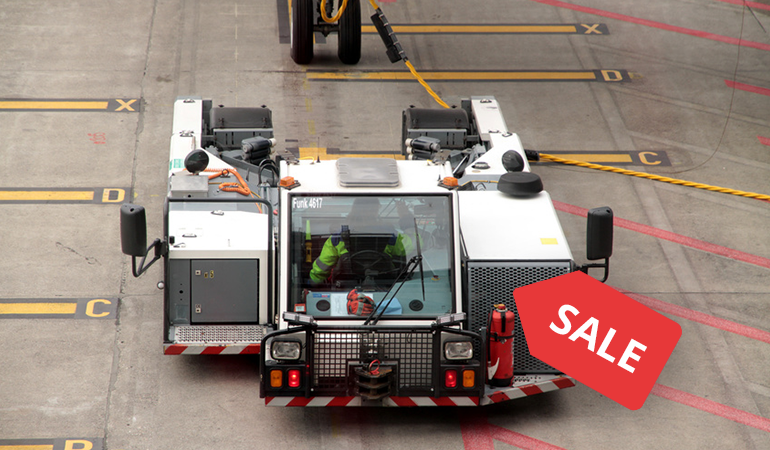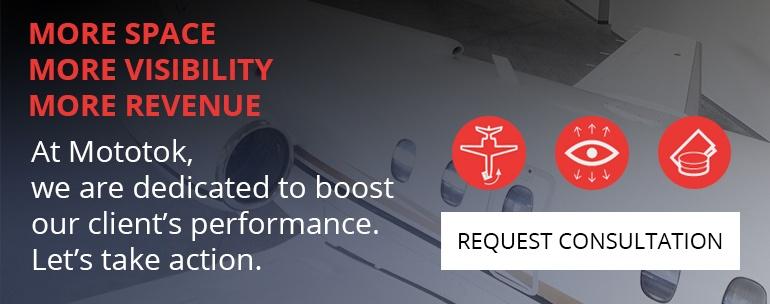Purchasing ground support equipment (GSE) for your airport operation is a big financial decision; GSE are high-cost assets to acquire, to maintain, and to operate. However, the cost of entry into GSE is dwarfed by the value of the aircraft which they support. In the sense of context and scale, the importance of purchasing quality GSE is obvious; aircraft are sensitive pieces of equipment with very precise and exacting tolerances. As the old adage goes, use the right tool for the job. GSE used in the service and support of aircraft should be equipment tailor made for aircraft support. We have all seen the sleepy little airport where the ‘aircraft tug’ is a farm tractor with a pintle hitch (or similar apparatus) fabricated onto it. Ad hoc solutions are fine for the independent aircraft owner/operator who is assuming the risk and liability upon himself. But professional operations demand professional grade equipment.
All of this is a circular discussion which comes back to the purchase of GSE. GSE is a highly specialized, niche market which makes options somewhat limited when it comes time to purchase. A limited market of suppliers coupled with the complexity of the product generally leads to products which have a relatively high threshold of entry for purchase. It is tempting to take the mental shortcut and skip straight to the used market to purchase a used aircraft tug. It will be cheaper. Well, maybe it will, in the short term anyway. Or it may not.
Used Aircraft Tugs: What do you need to consider?
The first consideration is unanimously “what does it cost?” This is an overly simple questions to ask though, because there are so many variables. Aircraft tugs are absolutely not a one-size-fits-all item. The first consideration, and arguably most significant, is determining what the requirements of your operation is.
Pushback tugs and tractors, which use a tow bar to connect the tug to the aircraft, have specific drawbar pull (DBP) ratings which transfer to aircraft gross weight. For instance, a fixed base operator which handles aircraft no larger than 30,000 lbs (13.607 kg) gross will only require a tug with 3,000 lbs (1.361 kg) DBP.
Aircraft tugs should only be used for the aircraft rating and weight range which they are designed for, because going either direction is actually dangerous and poses significant risk for damage to the aircraft and potential for harm.
Using a tug rated for an aircraft category higher than the one being towed (i.e., a more powerful tug) may seem like no issue at all, but that is not the case. The landing gear of smaller aircraft are not designed for the high power and torque values associated, and can be seriously damaged by a tug which is too powerful. Conversely, using a tug which is too small is very dangerous, assuming it is able to move the aircraft at all. If the tug is not heavy enough for the category of aircraft being towed, its braking action will be severely limited, as well as the ability to turn.
Aircraft larger than the maximum rating of the tug can literally push a tug through stops and turns.
Once you have verified the appropriate vehicle class and type for your operation, you need to consider frequency of use, physical and atmospheric conditions, and the learning curve necessary for the prescribed equipment. For instance, pushback tractors take considerable more experience to become competent using than a remotely-operated system.
Used Airport Equipment—what obstacles and threats exist?
The best to look at this question is comparing it to purchasing a used automobile. The concept is essentially the same, it has just been scaled up considerably. When looking for used airport equipment, particularly used aircraft tugs, there are fewer vendors who will have the equipment available, but the obstacles and threats are consistent with purchasing an automobile. Just how exactly will you know that you are buying a decent piece of machinery and not a “lemon”? It is not unusual for public airports to put their used equipment for sale on their public website, or on any of the airport forums on the internet. Sometimes the deals are pretty good, or seem to be. But there is no guarantee of operation and functionality beyond the good faith in the seller. Sadly, this is usually not enough to bet your business on. The purchase price of a surplus or used aircraft tug may be low, but that is not necessarily an indicator of the actual price of the product. This is not to mention the matter of scarcity; there is no guarantee that suitable equipment will even be available when you need it, or anywhere practical to get it.
Used Ground Support Equipment — what good alternatives are there to buying a used tug?
Perhaps the most sensible and obvious solution to purchasing a piece of used equipment for the sensitive purpose of servicing aircraft is simply purchasing a new unit, which will be warrantied by the manufacturer. In lieu of that, or if your budget is just not at a point to support new equipment, then a much less risky alternative than the buy as-is market is purchasing a tug (or other GSE) which has either been factory reconditioned or reconstructed to zero time. Reconditioning could be a good option if your organization has an existing piece of GSE that needs to be brought up to current operating standards. A reconstructed piece of machinery is a viable option which will provide an essentially new piece of equipment with warranty at a price point still less than new. One option to buying is leasing equipment. It provides a good solution to the company which has the need for GSE, or is perhaps expanding locations or capabilities but has not necessarily established cash flow to the point where they can absorb purchasing equipment and the associated upkeep. This is also a good option for expansions which are not forecasted to be permanent in nature.
One option to buying is leasing equipment. It provides a good solution to the company which has the need for GSE, or is perhaps expanding locations or capabilities but has not necessarily established cash flow to the point where they can absorb purchasing equipment and the associated upkeep. This is also a good option for expansions which are not forecasted to be permanent in nature.
Is it more profitable to purchase new instead of used aircraft tugs?
A compelling argument can absolutely be made for the profitability of purchasing new vice used aircraft tugs. Much of that decision is going to come down to operation tempo and frequency of use. For airline terminals, heavily active MROs, and corporate jet operations where aircraft must move in and out of hangars daily (or more), the obvious answer is new. Clients with high operational tempos must have the peace of mind that the equipment is going to work when they need it to, and remain fully functional throughout the duration of the duty day. Active airline terminals receive and depart flights around the clock and they need the assurance that their machinery can keep up with that. Used machinery are going to be less environmentally friendly, and often require more manpower and training to provide the same level of support. The cost saved in reduced manpower and reduced resources can easily make up for the disparity in initial purchase price.
Take this simple sample for instance. A used pushback tug may cost $50,000 in initial investment up front. But this vehicle requires minimum of three personnel for each tow. Assuming the operation is conducted numerous times per shift, such as airline terminal pushbacks which are nearly continuous, the personnel requirements will be built around requiring three-to-four people for pushbacks. However, replacing that used diesel tractor with a remotely operated electric unit now takes the manpower element to one person for pushbacks. If the average salary package per worker were $50,000 per year, this represents an instant savings of at a minimum $100,000 per year. Over a three year span, which is a very small percentage of the lifecycle of a tug, you have saved $300,000 in personnel cost alone.
In terms of fuel savings, we can loosely assume that a diesel tug rated in the range of 195 tons will consume around 4 gal (15 l)/hr of diesel at low power setting (tugs spend most of their time in lower settings). If the ops tempo dictates that the tug stays running or at least is in operation for ten hours per day, which would be 40 gallons (150 litres) of fuel per day. Multiply by 365 days per year (airlines do not take days off!), and we see a usage of 14,600 gallons per year. Multiply that by a modest $2.50 per gallon and the fuel total is at $36,500 per annum. By contrast, electric pushback units will make an almost undiscernible impact on energy usage for a terminal. So before any maintenance costs are even estimated, the annual savings potential for using a new electric pushback over a diesel unit is roughly $136,500.
Conclusion to used aircraft tugs
Buying a used aircraft tugs might seem like a good and money-saving idea. If you are careful and lucky it can actually work out just fine. But be sure to consider all the risks and costs that can go along with buying used aircraft tugs.
We are gladly willing to help you find the best solution for your ground handling. Request your free consultation right now!



Comments